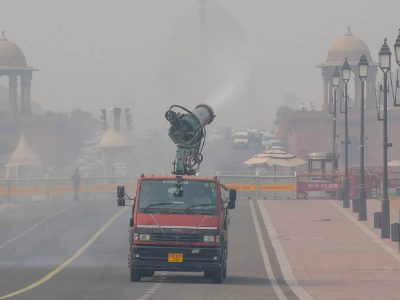With the expansion of western medicine in colonial India and new family welfare policies being implemented after independence, traditional ways of delivering babies seemed to be becoming history. But some expectant mothers do not agree that hospital deliveries are best for their babies.
According to the National Family Health Survey-5 (NFHS) data, 14.3% women undergo Caesarean sections across public healthcare facilities. There is a growing resentment in society against what is seen as commercialisation, since the hospital bill for C-sections is much higher than for normal delivery.
Pregnant women who are reluctant to submit themselves to the care of gynaecologists feel the doctor exercises too much control over the whole nine-month process. Such women want to regain their autonomy by opting for home birth.
Breaking free
Reba Daniel, a former health journalist, is currently practising as a childbirth educator and doula (someone who gives emotional support to the mother throughout the pregnancy). It all started when she and her husband opted for home birth in 2008. “I believe that the hospital setup does not give me full autonomy for my delivery”, she asserts.
She continues, “The medical system has its own set of rules. For instance, women are supposed to lie down prior to delivery. I wasn’t comfortable with the fact that someone has an eye on me all the time.” The fact that someone else would be exerting force and control over her while she was giving birth was a very uncomfortable thought.
She further elaborates, “I know the doctors are there to help me. But if I wanted to take a walk, I would have had to ask their permission, which I wasn’t comfortable with.”
While talking about how the home should be sterilised for delivery, she says, “Actually our homes are much cleaner than hospitals. From the first trimester, the mother and the baby are resilient to the microbes at your home.” According to her, home provides a safer atmosphere to give birth than a hospital.

A similar motivation led Ruth Malik to found Birth India in 2008, which supports families and communities in seeking appropriate care for the mother and baby. Her traumatic experiences with C-sections during both of her deliveries led her to develop the organisation.
Malik is now a trained doula and hypnobirthing practitioner, she started with setting up a database of childbirth specialists, post-natal specialists, lactation educators and birthing educators.
Water birthing
Though the number of babies born at home is much lower than institutional births, many women have started to voice doubts about the birthing experience at hospitals and look for alternatives.
One such option is giving birth in a tub. Water birthing, as it is called, reduces the pain of the final push before the baby is born due to buoyancy. The mother can either go into labour in the water or just release the baby in water. As giving birth is an intense activity, the warm water calms the mother.
In Delhi, Sitaram Bhartia Institute of Science and Research provides the facility of water birthing at its hospital. The water birth can also be set up in the home using an inflatable tub filled with water.
This option, good as it sounds, is not for everyone. Women with previous medical conditions like high blood pressure, diabetics and epileptic fits are advised not to consider water births. Only women with low-risk pregnancy and whose labour starts on its own can choose water births.
Shivani Sharma, who delivered her second child via water birth at her home alongside trained medical professionals, is happy with the experience. “It actually got me closer to myself. It sort of aligned me from all sides,” she says.
Her first delivery was perfect with the help of a supportive doctor and doula and it transformed her in all ways. She adds, “Everything went how I had rehearsed it in my mind and the post-partum recovery was good.”
She started working with mothers as a birth educator after resigning her cooperative job. By the time she was ready to have another child, she was aware of the things which she needed to work on. It is the emotional stability of the mother which matters the most during the whole pregnancy.
She continues, “I didn’t feel like going to a hospital. The prenatals were done by the midwife though I had a doctor lined up. At some point of time, doubt starts to creep in, but all your preparation helps you to deal with that”
Sharma felt that the experience brought the family closer together. The simplicity of home birth was most satisfying with her. “The whole process flowed organically and helped me learn a lot about motherhood”, she adds.
She asserts, “Home births are not a trend and it’s not for everybody. The mother should be able to own the situation.”
Professional help
Vijaya Krishnan is a certified professional midwife and accredited Lamaze trainer. She assists the mothers during water births by creating a soothing atmosphere.
“In the pool, the mother can adopt any position that she finds comfortable with,” says Dr Anita Sabherwal Anand, DNB Obstetrics and Gynaecology. “The temperature of the water is monitored and adjusted according to the mother’s requirement. If labour pains peak and become impossible to handle, pain relief in the form of Entonox gas can also be offered.”
She adds, “It is possible that the mother neglects her nutrition and hydration a little when she is in the pool. This is why she will be asked to take in small quantities of soft fruit or curd.”
Another aspect of home and water births is the presence of a husband/partner alongside the mother. In India, most hospitals do not allow husbands to be present during delivery. Some institutions allow birthing companions who have to be females with prior experience.
Studies suggest that the presence of the partner helps the mother in labour. In home births, the partners play an important role in comforting the mother along with doulas and midwives.
Partners can also play an active role here by making sure nutrition and hydration stays consistent throughout.
Dr Anand states, “Once the baby is born, she is gently pushed and lifted up to the mother’s chest. They are allowed to stay in the warm water together for some time in order to settle themselves and recover.” Once both mother and baby are ready, they are helped out of the pool, dried off and warmed up, and carried over to a clean, cosy bed.
Compare that to the usual anxiety a mother feels about getting out of the sterile atmosphere of the hospital and back to her familiar surroundings, and the idea of both home and water births seems tempting.
For more stories that cover the ongoings of Delhi NCR, follow us on:
Instagram: instagram.com/thepatriot_in/
Twitter: twitter.com/Patriot_Delhi
Facebook: facebook.com/Thepatriotnewsindia





